Part of a series of articles titled Volcano Types.
Previous: Fissure Volcanoes
Article
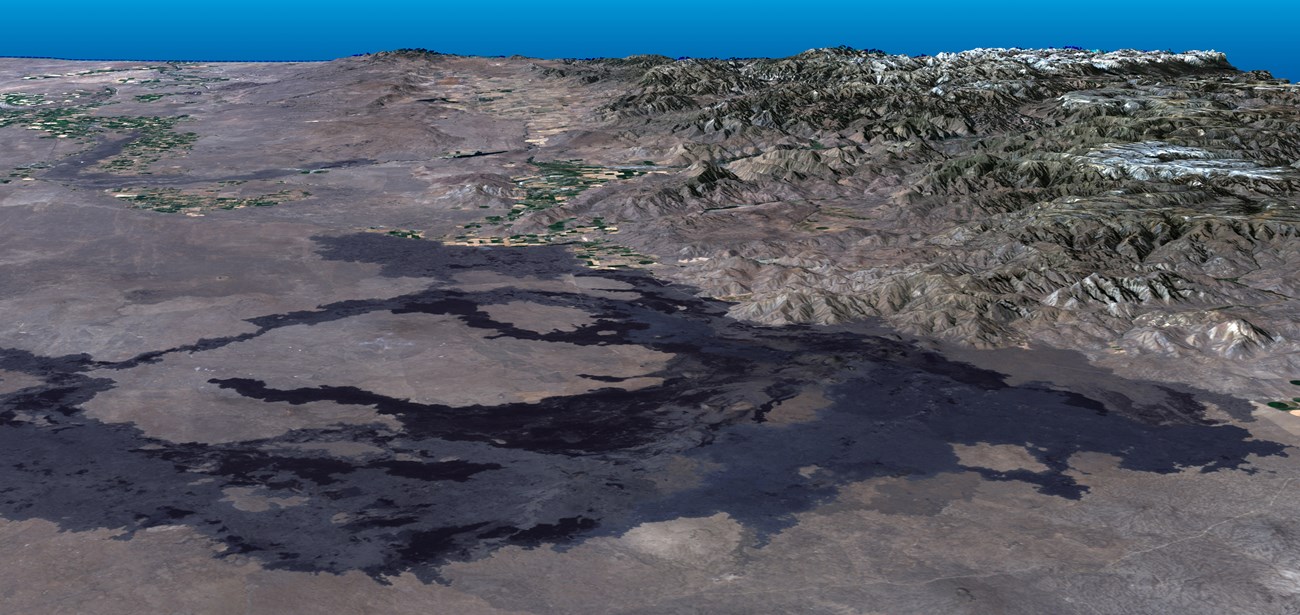
NASA Earth Observatory.
Volcanic fields are clusters of volcanoes or areas covered by volcanic rocks. Monogenetic volcanic fields consist mostly (or exclusively) of monogenetic volcanoes. These volcanoes (cinder cones, maars, tuff rings, and eruptive fissures) each experience one period of activity.
Most monogenetic volcanic fields include areas covered by basaltic lava flows and clusters of cinders cones and/or maars and tuff rings, sometimes with a composite volcano or shield volcano located near the center of the field.
Monogenetic volcanic fields form in areas with low magma supply. Individual volcanoes in these fields do not share a common volcanic plumbing system. Each subsequent batch of magma from the source region forms its owns conduit system to reach the surface. Monogenetic volcanic fields can consist of as many as hundreds of individual volcanoes, with long periods of time between eruptive episodes.
At least 13 units of the National Park system contain all or parts of monogenetic volcanic fields.
Bering Land Bridge NPres contains two monogenetic volcanic fields.
The Espenberg Volcanic Field is the northernmost volcanic field in North America, lying above the Arctic Circle. The field consists of five maar volcanoes and five small shield volcanoes.
The Imuruk Lake Volcanic Field consists of approximately 75 vents and associated basaltic to andesitic lava flows. The field contains small shield volcanoes and cinder cones. The most recent eruption produced the Lost Jim lava flow between 1,000 and 2,000 years ago.
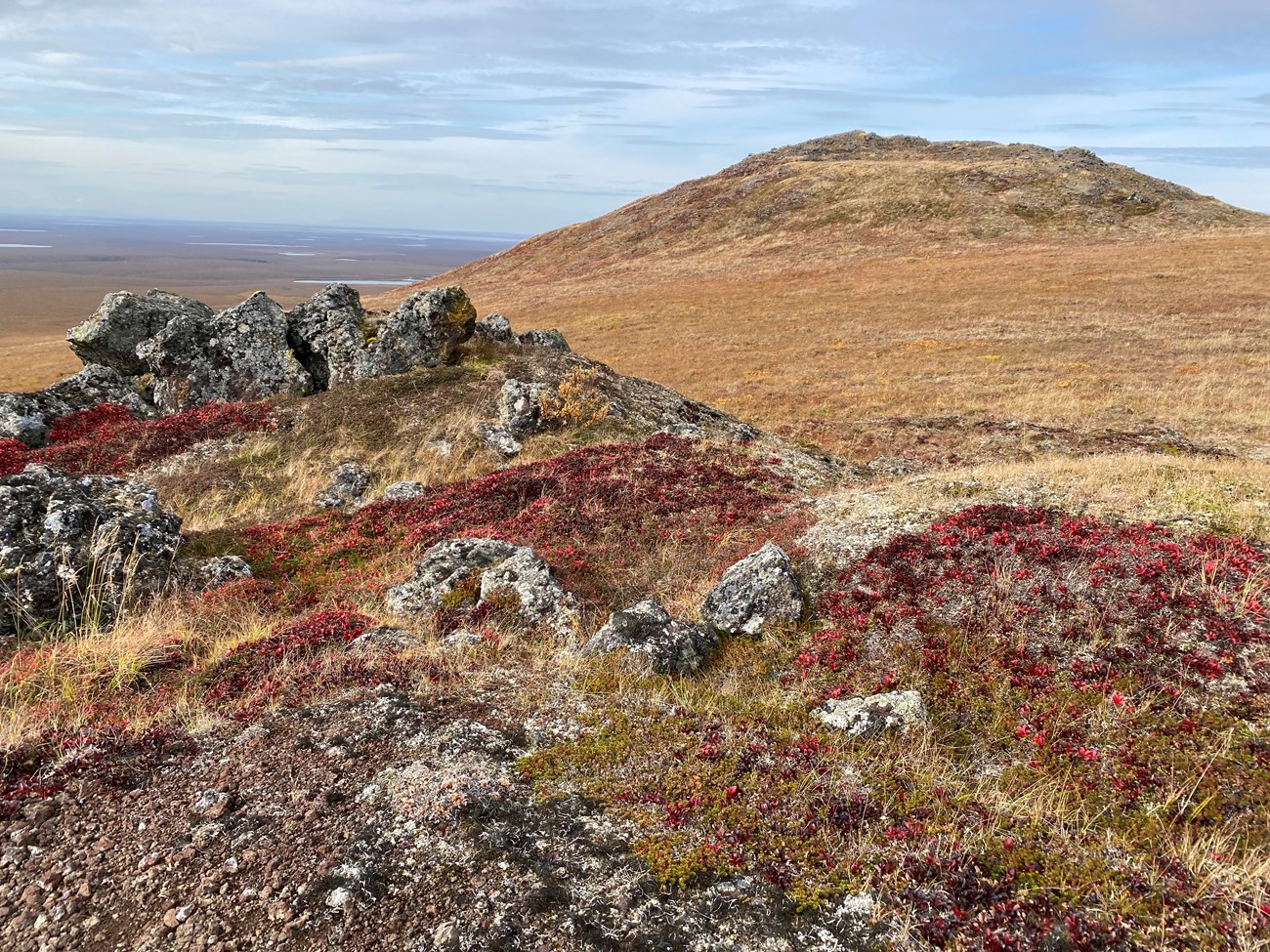
USGS/AVO photo by Tim Orr.
Capulin Volcano is situated near the center of the Raton-Clayton Volcanic Field, the easternmost young volcanic field in the United States. The Raton-Clayton Volcanic Field covers approximately 8,000 square miles (20,000 square km). The field consists of cinder cones, volcanic domes, a few fissure volcanoes, and a large andesite shield volcano. It has been intermittently active for about the last 9 million years. Capulin Volcano is one of the youngest volcanoes in the field and erupted 54,200 years ago.
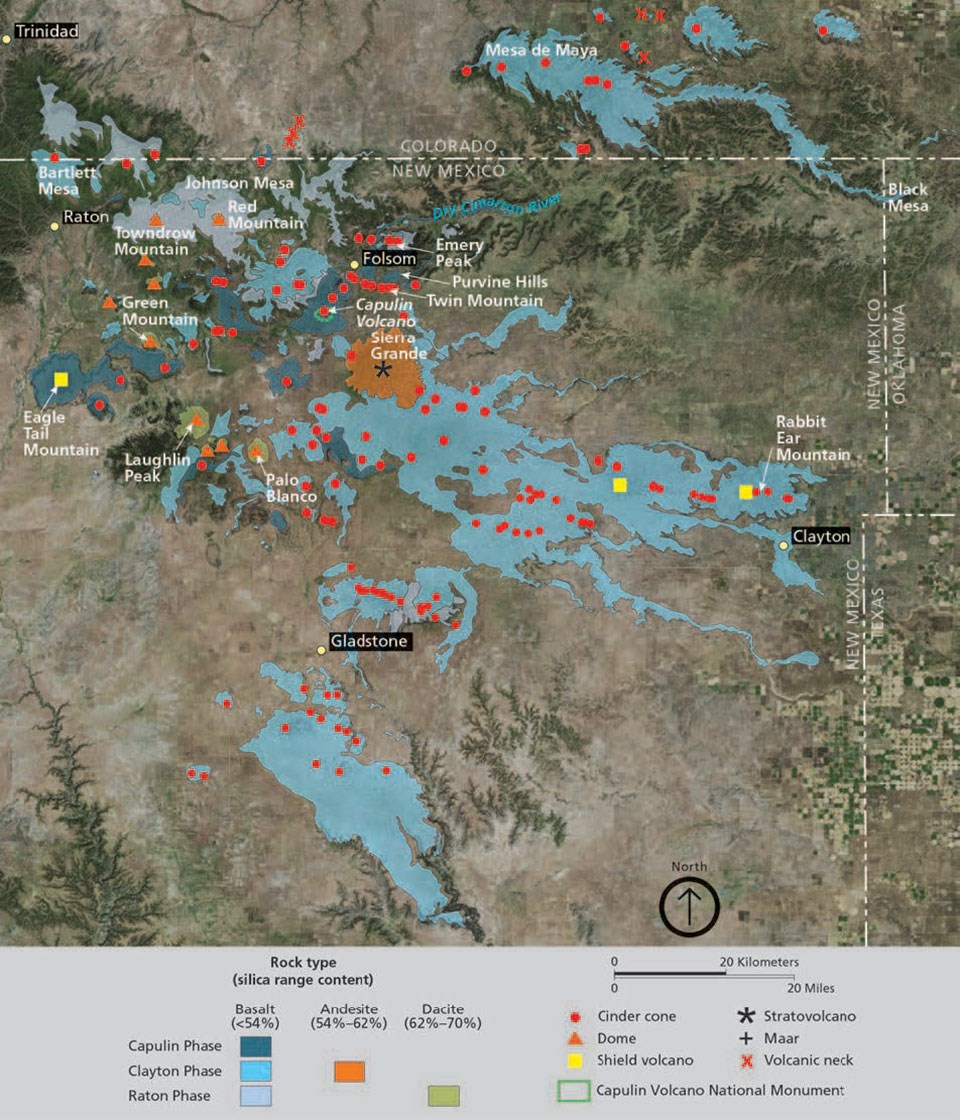
The Raton-Clayton Volcanic Field experienced three phases of activity. The oldest phase, the Raton phase, occurred between 9.2 and 3.5 million years ago. The Clayton phase occurred between about 3.8 and 1.7 million years ago, and the Capulin phase has occurred in the last 1.7 million years.
Graphic by Trista Thornberry-Ehrlich (Colorado State University) after Luedke and Smith (1978, plate 2), Crumpler and Aubele (2008, online map), and Price (2010, p. 315). Silica range content is from Luedke and Smith (1978, plate 2).
Craters of the Moon NM contains the Craters of the Moon, Wapi, and Kings Bowl lava fields along the Great Rift volcanic rift zone on the Snake River Plain in Idaho. The Craters of the Moon volcanic field covers approximately 620 square miles (1,600 square km) and experienced eight eruptive episodes starting about 15,000 years ago. The field contains fissure volcanoes, cinder cones, a few small shield volcanoes, and basaltic lava flows.
El Malpais National Monument preserves the natural and cultural resources of part of the Zuni-Bandera Volcanic Field. Volcanic activity in the Zuni-Bandera Volcanic Field began about 700,000 years ago. The field consists mostly of basaltic lava flows that are notable for their unusually large length and volume, diversity of lava flow morphologies, and the presence of lava tubes. These lava flows were erupted from a variety of vents including fissures and cinder cones.
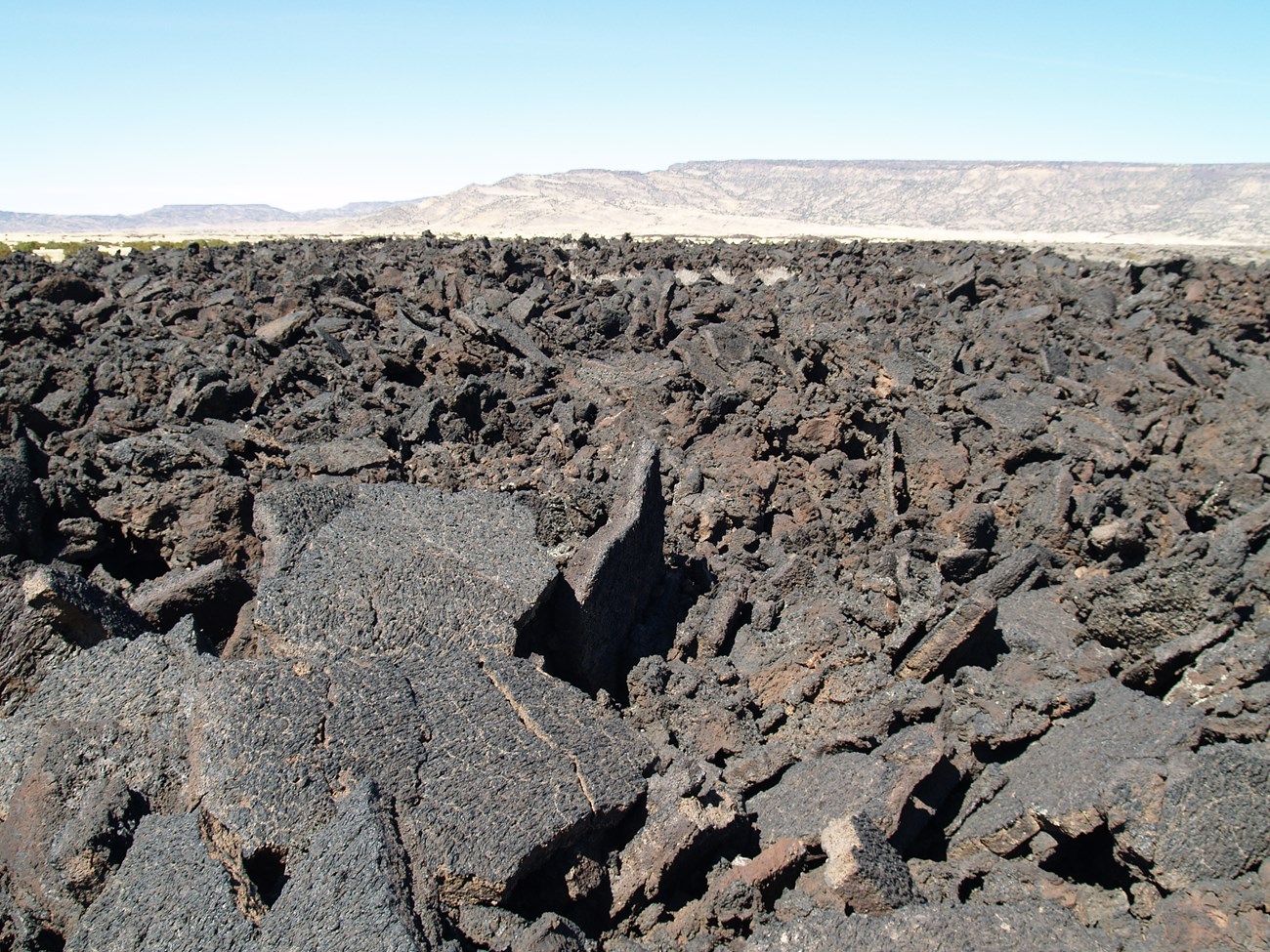
Photo by Larry Crumpler.
The Cima Volcanic Field in Mojave National Preserve is designated as Cinder Cone Natural Area, a National Natural Landmark. The volcanic field covers approximately 25,600 acres, and consists of a series of cinder cones and associated basaltic lava flows. Activity in the volcanic field began about 7 million years ago with the most recent eruption occurring about 15,000 years ago.
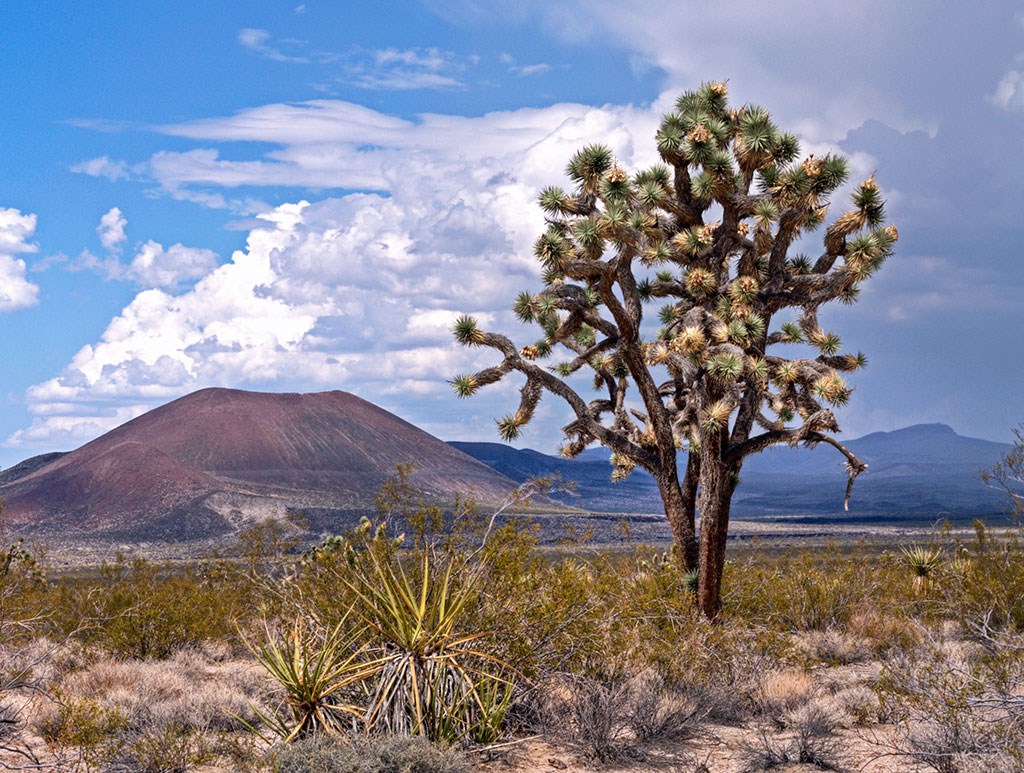
NPS Photo by Dale Pate.
Sunset Crater Volcano, a cinder cone that erupted in 1085 CE (common era), is the youngest volcano in the San Francisco Volcanic Field in northern Arizona. This volcanic field consists predominantly of basaltic cinder cones, but also a few composite volcanoes such as in the San Francisco Peaks in the center of the field as well as a few lava domes. The field first became active approximately 6 million years ago.


Left image
The San Francisco Volcanic Field covers about 1,800 square miles (4,660 square km and includes the state’s tallest mountain, Humphreys Peak, a composite volcano, at an elevation of 12,633 feet (3,850 m).
Credit: USGS image.
Right image
Image with feature labels added.
While their individual volcanic centers usually only have one eruptive episode, monogenetic volcanic fields as a whole experience volcanic activity that occurs over time periods that last as long as several million years. Erupted volumes at each volcanic center are generally small, but the cumulative volume of the field can be much larger than large polygenetic volcanoes like composite volcanoes, and even some shield volcanoes.
Monogenetic volcanic fields generally consist of widely scattered small volcanoes such as cinder cones and fissure volcanoes. Maars and tuff rings coccur in these fields where there is surface water or abundant shallow groundwater, or even permafrost.
Volcanic vents may be aligned along rifts and other tectonic features in monogenetic fields.
A range of compositions can be erupted from volcanoes within monogenetic volcanic fields, but basaltic and other mafic lavas are the most common. Some monogenetic fields such as the Zuni-Bandera Volcanic Field at El Malpais National Monument erupt only basaltic lavas, and others such as the Raton-Clayton Volcanic Field erupt a range of compositions. The Raton-Clayton Volcanic Field may be the most compositionally diverse field in the United States having erupted compositions ranging from ultramafic to rhyolite (36–70 weight % SiO2).
Eruptions in monogenetic volcanic fields may range from nonexplosive to violently explosive:
Basaltic lava flows are the most common volcanic products in monogenetic volcanic field. They may be erupted from fissure volcanoes or other vents, sometimes associated with cinder cones. These eruptions are usually Effusive (Volcanic Explosivity Index; VEI 0) with Hawaiian style eruptions where fire fountains are produced. Spatter cones may be present along fissure volcanoes.
Cinder cone eruptions are usually Severe to Explosive (VEI 1-2), but rarely may be more explosive. The eruption of Sunset Crater Volcano in the San Francisco Volcanic Field was Sub-Plinian (VEI 4 Cataclysmic).
Monogenetic volcanic fields usually occur in continental environments and may be associated with extension, or be found adjacent to areas that are undergoing continental rifting. Several monogenetic fields are found along the margin of the Colorado Plateau, including the Kolob (Zion NP), Uinkaret (Grand Canyon NP and Grand Canyon-Parashant NM), San Francisco (Sunset Crater Volcano NM), Hopi Buttes (Petrified Forest NP), and Zuni-Bandera (El Malpais NM) volcanic fields.
Basaltic lava flows and flow fields are one of the main hallmarks of monogenetic volcanic fields. These lava flows may be erupted from fissures or vents near the bases of cinder cones. Basaltic flows are relatively fluid and may cover large geographic areas.
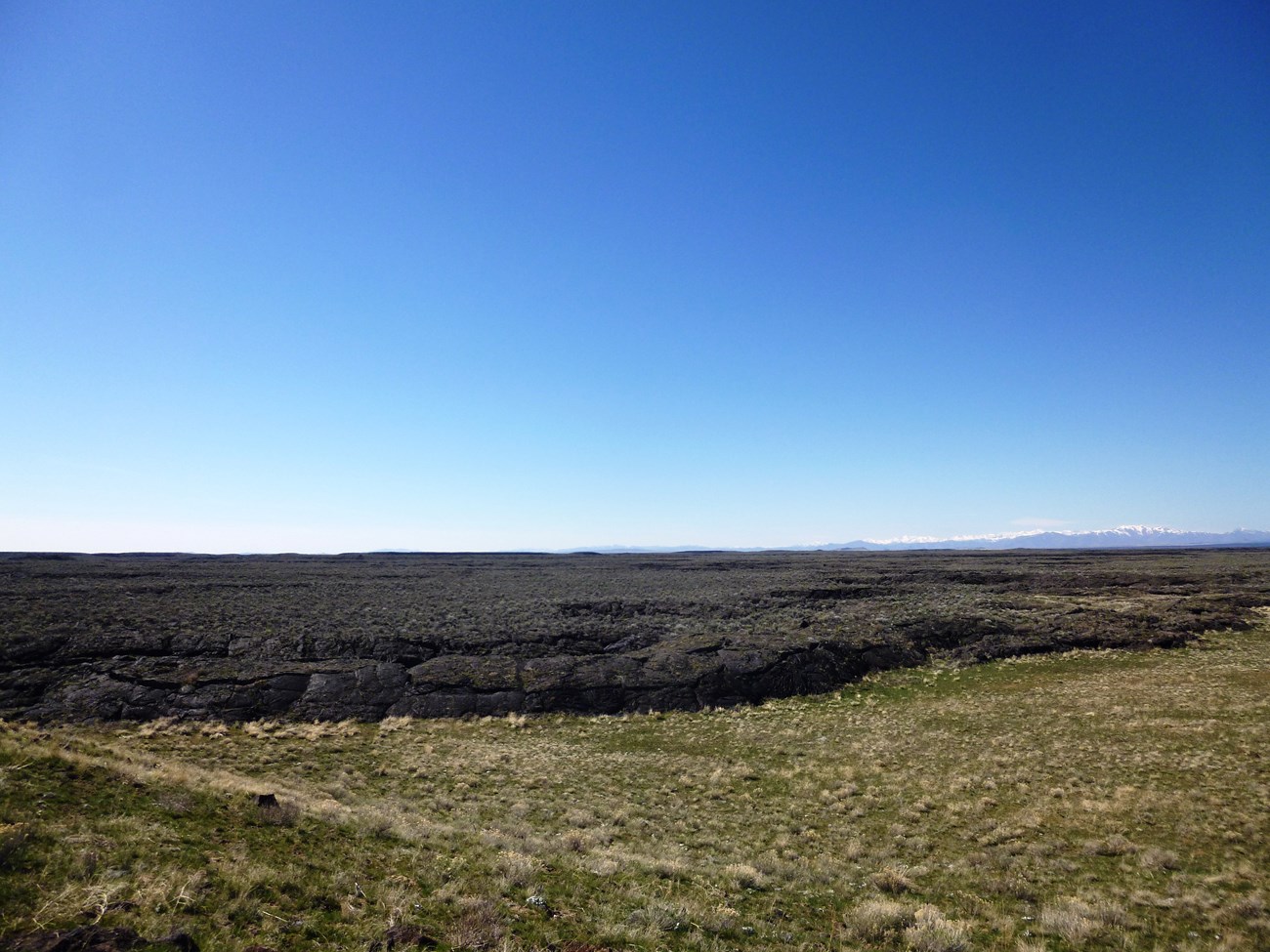
NPS photo.
Cinder cones are the most common type of volcanic edifice in monogenetic volcanic fields.
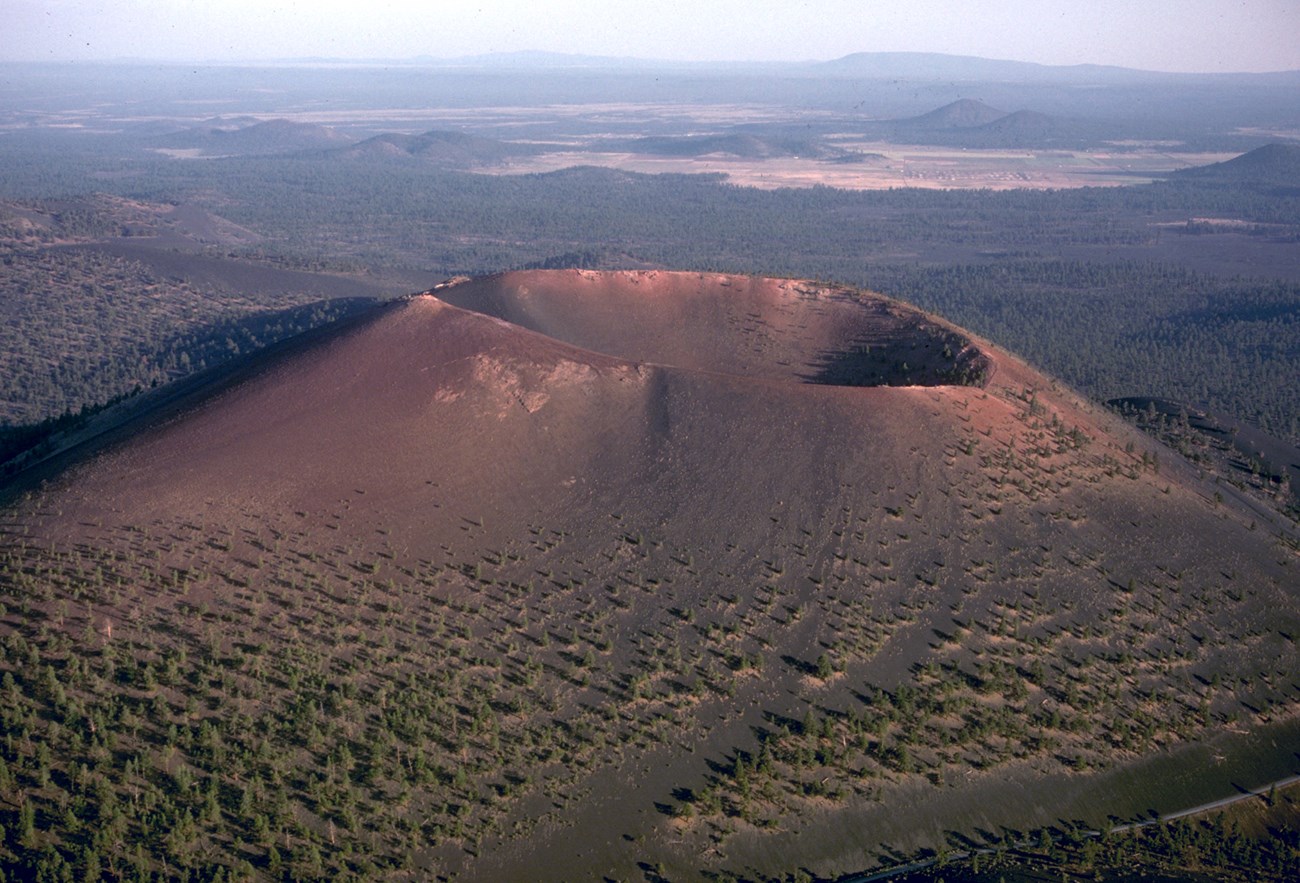
NPS photo.
Maars and tuff rings may occur in monogenetic volcanic fields where there is surface water or groundwater, or even permafrost. Two volcanic fields that are in (or partially in) units of the National Park System contain numerous maars and/or tuff rings. The Hopi Buttes Volcanic Field, which is mostly north of Petrified Forest National Park but extends to within the park, is one of the most extensive maar-diatreme fields on the planet. The Espenberg Volcanic Field in Bering Land Bridge NPres contains the largest known maars on Earth.

USGS image by Tim Orr.
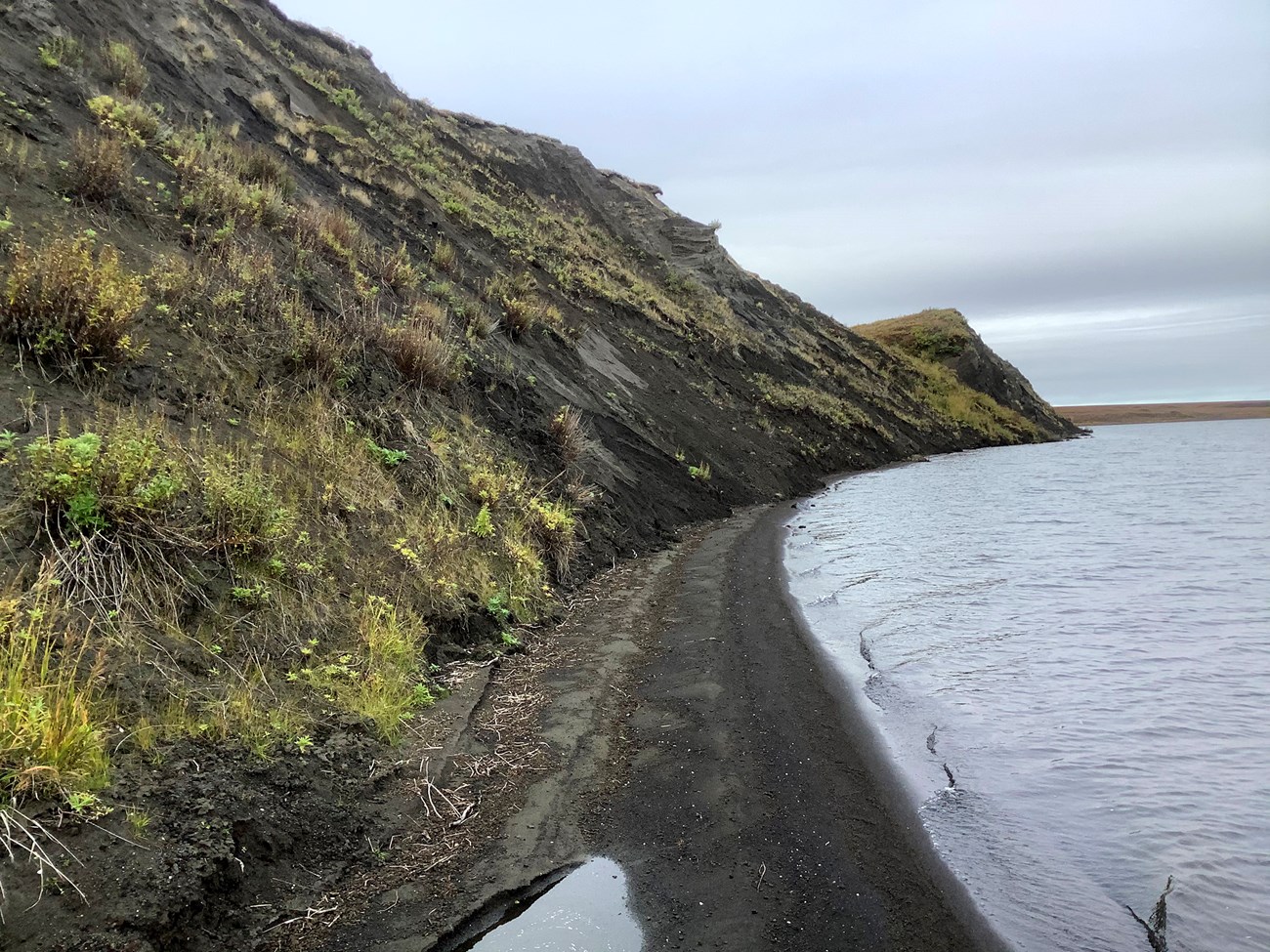
USGS image by Tim Orr.
Lava tubes are common in basaltic lava flows, and are found in many monogenetic volcanic fields, including those at Bering Land Bridge National Preserve, Craters of the Moon National Monument and Preserve, and El Malpais National Monument.
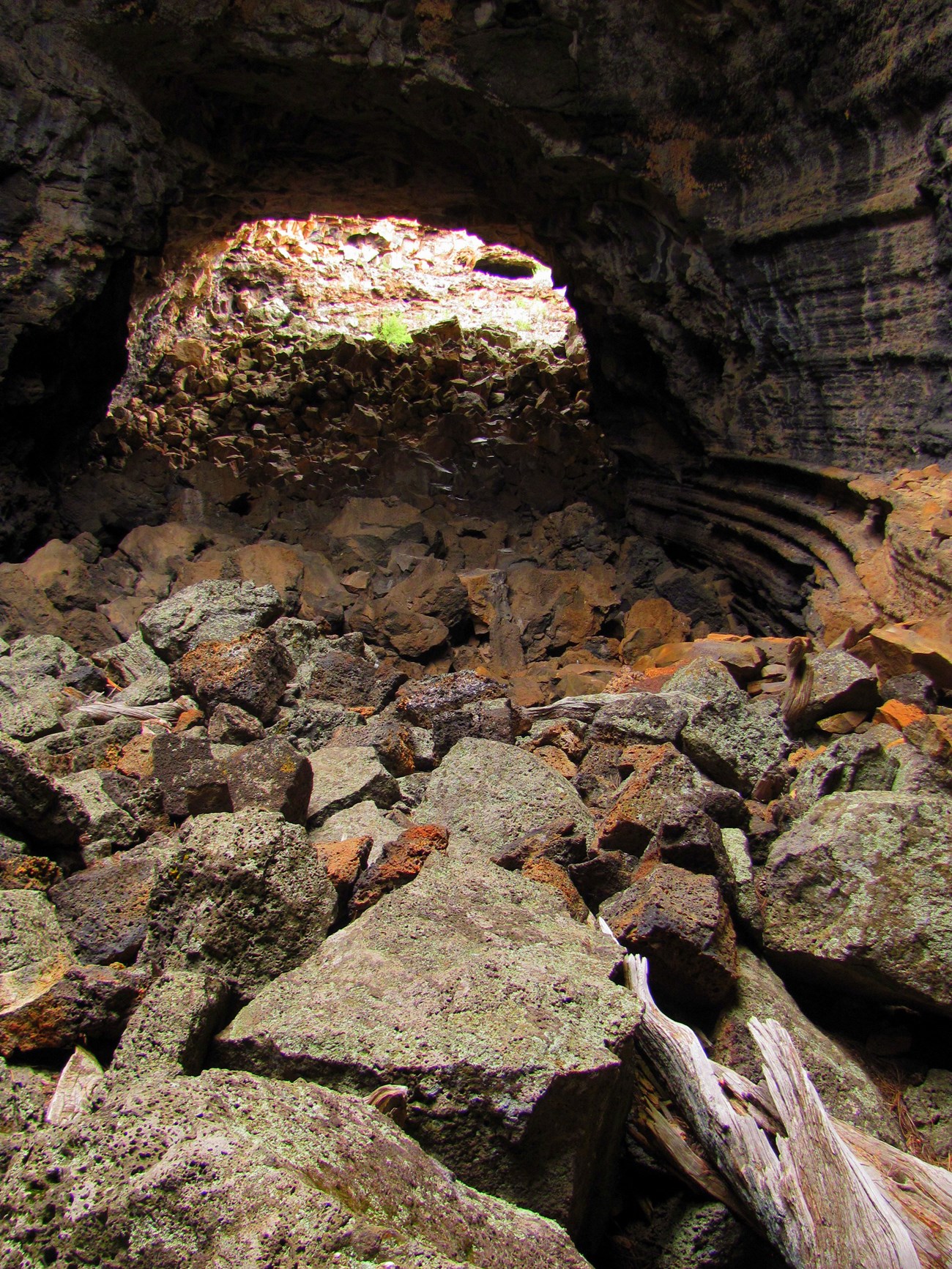
Photo by John Kuehnert.
Some monogenetic volcanic fields contain numerous spatter cones, especially ones with fissure volcanoes. Spatter cones are accumulations of volcanic bombs that were still molten when they landed so that they welded together to form deposits known as spatter or agglutinate.
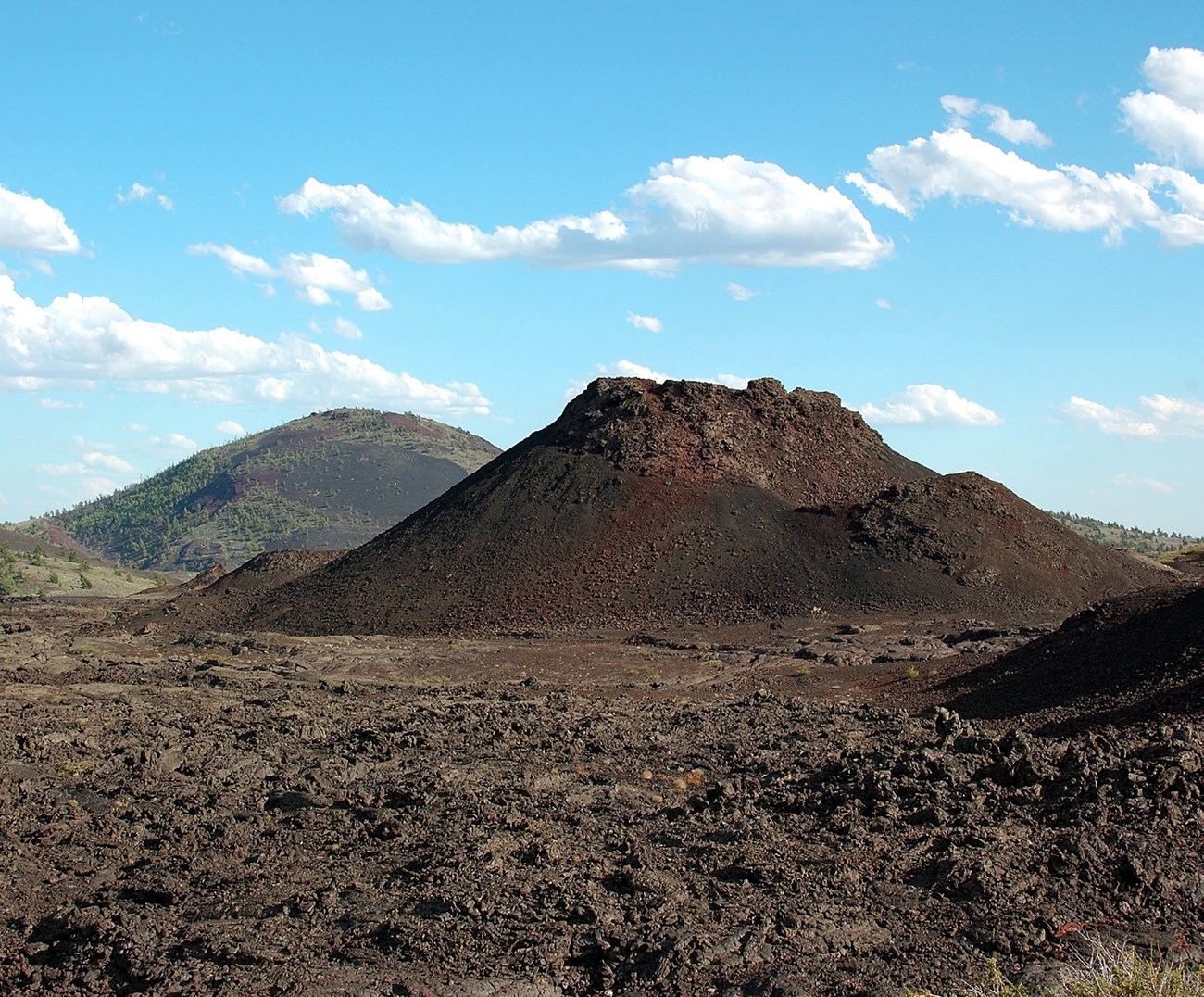
Because monogenetic volcanic fields have low magma supply rates, they experience long periods of time between eruptions. Most individual volcanic centers such as cinder cones, maars, tuff rings, and eruptive fissures, are monogenetic, meaning that they should not have a risk of a new eruption. But a new eruption may occur within the volcanic field. Precursors to eruptions include earthquakes and rumblings (subterranean noises).
Geohazards on existing volcanoes include rockfall, debris flows, and other mass wasting events on the slopes. Geohazards on solidified lava flows include rockfall, fissures, rough uneven terrain, and hazards related to the presence of lava tubes.
Bering Land Bridge National Preserve (BELA), Alaska—[BELA Geodiversity Atlas] [BELA Park Home] [BELA npshistory.com]
Capulin Volcano National Monument (CAVO), New Mexico—[CAVO Geodiversity Atlas] [CAVO Park Home ] [CAVO npshistory.com]
Craters of the Moon National Monument (CRMO), Idaho—[CRMO Geodiversity Atlas] [CRMO Park Home] [CRMO npshistory.com]
Death Valley National Park (DEVA), California & Nevada—[DEVA Geodiversity Atlas] [DEVA Park Home] [DEVA npshistory.com]
El Malpais National Monument (ELMA), New Mexico—[ELMA Geodiversity Atlas] [ELMA Park Home] [ELMA npshistory.com]
Grand Canyon National Park (GRCA), Arizona—[GRCA Geodiversity Atlas] [GRCA Park Home] [GRCA npshistory.com]
Grand Canyon-Parashant National Monument (PARA), Arizona—[PARA Geodiversity Atlas] [PARA Park Home] [PARA npshistory.com]
Lake Mead National Recreation Area (LAKE), Arizona and Nevada—[LAKE Geodiversity Atlas] [LAKE Park Home] [LAKE npshistory.com]
Mojave National Preserve (MOJA), California—[MOJA Geodiversity Atlas] [MOJA Park Home] [MOJA npshistory.com]
Petrified Forest National Park (PEFO), Arizona—[PEFO Geodiversity Atlas] [PEFO Park Home] [PEFO npshistory.com]
Petroglyph National Monument (PETR), New Mexico—[PETR Geodiversity Atlas] [PETR Park Home] [PETR npshistory.com]
Sunset Crater Volcano National Monument (SUCR), Arizona—[SUCR Geodiversity Atlas] [SUCR Park Home] [SUCR npshistory.com]
Zion National Park (ZION), Utah—[ZION Geodiversity Atlas] [ZION Park Home] [ZION npshistory.com]
Part of a series of articles titled Volcano Types.
Previous: Fissure Volcanoes
Last updated: April 17, 2023